Your Ultimate Guide to Flawless Holiday Potatoes (No More Stress!)
My first holiday season in a professional kitchen, I swear I peeled a mountain of potatoes. The head chef was a stickler for details, and to him, perfect potatoes were the soul of a great meal. He’d inspect every single one, and he taught me something that’s stuck with me ever since: potatoes aren’t just a side dish. They’re a benchmark. Get them right, and the whole meal sings. Get them wrong, and… well, everything just feels a little off.
In this article
So I get it. The pressure during the holidays is real. You want to create that amazing, memorable feast, and potatoes are a huge part of that tradition. This guide is built on everything I learned in busy kitchens and from teaching new cooks the ropes. We’re not just following recipes; we’re digging into the techniques that guarantee incredible results every single time. We’ll cover why some potatoes are better for mashing than roasting, the real secret to that perfect crispy skin, and how to build a gratin that looks like it came from a five-star restaurant. This is about mastering the craft behind the ultimate comfort food.
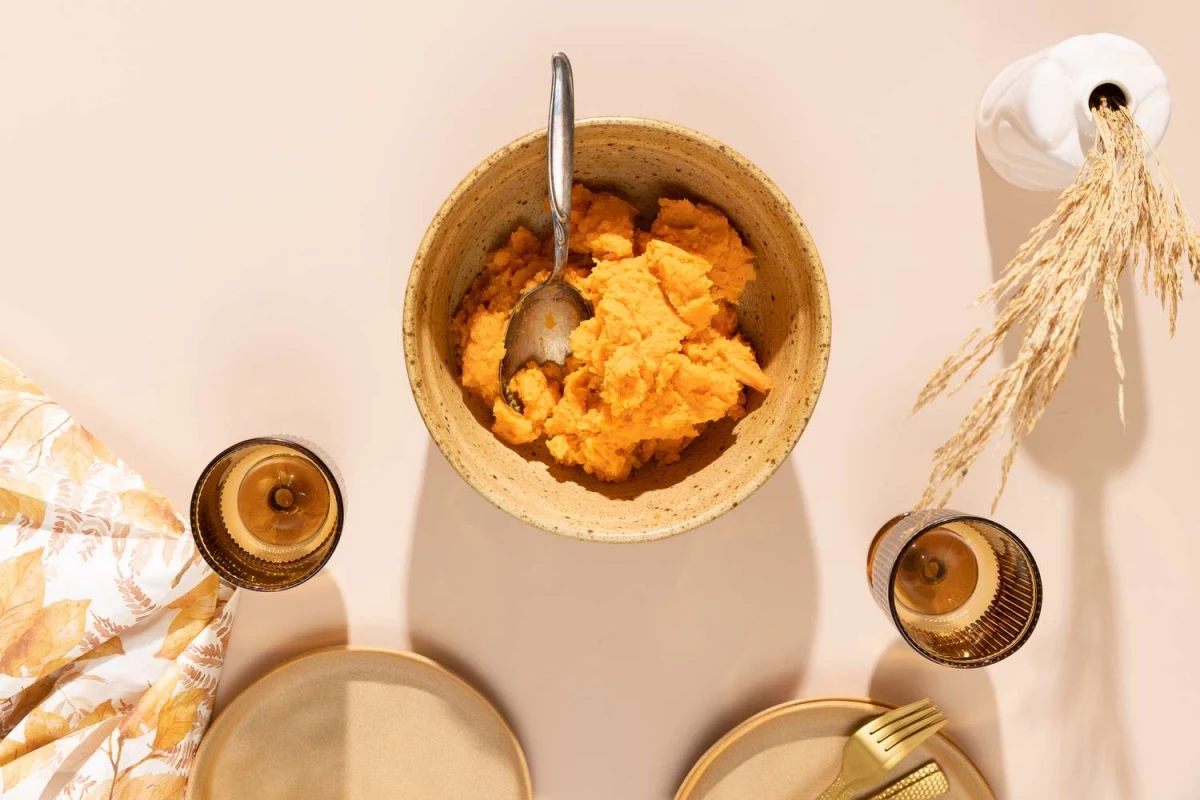
First Things First: Choosing the Right Potato
Before you even think about turning on the oven, we need to talk potatoes. And no, this isn’t about just grabbing whatever bag is on sale. The type of potato you choose is probably the single biggest factor in how your dish turns out, all thanks to one little thing: starch.
Potatoes basically come in two main flavors: starchy or waxy.
- Starchy Potatoes (like Russets): These are your fluffy, floury heroes. Think of potatoes like Russets, which you can find in any grocery store. They’re high in starch and lower in moisture. When you cook them, they break down into a beautiful, light texture. This makes them the undisputed champion for fluffy mashed potatoes and for roast potatoes with that soft, steamy interior.
- Waxy Potatoes (like Red or New Potatoes): These guys are the opposite. They’re low in starch, high in moisture, and hold their shape like a champ. Think of red-skinned potatoes, fingerlings, or those small new potatoes. Because they stay firm, they’re perfect for things like potato salad or a gratin where you want to see those distinct, beautiful slices.
- The All-Rounder (like Yukon Golds): Sitting right in the middle, you have varieties like the Yukon Gold. They have a medium starch content and a naturally creamy, almost buttery flavor. Honestly, they’re wonderfully versatile. They’ll make a rich, dense mash and can hold up to roasting, even if they won’t get quite as fluffy as a Russet.
The bottom line? Match the potato to the job. Trying to mash a waxy red potato will likely get you a dense, sometimes gluey result. And if you use a starchy Russet for a gratin, your beautiful slices might just turn to mush. Getting this right is half the battle.
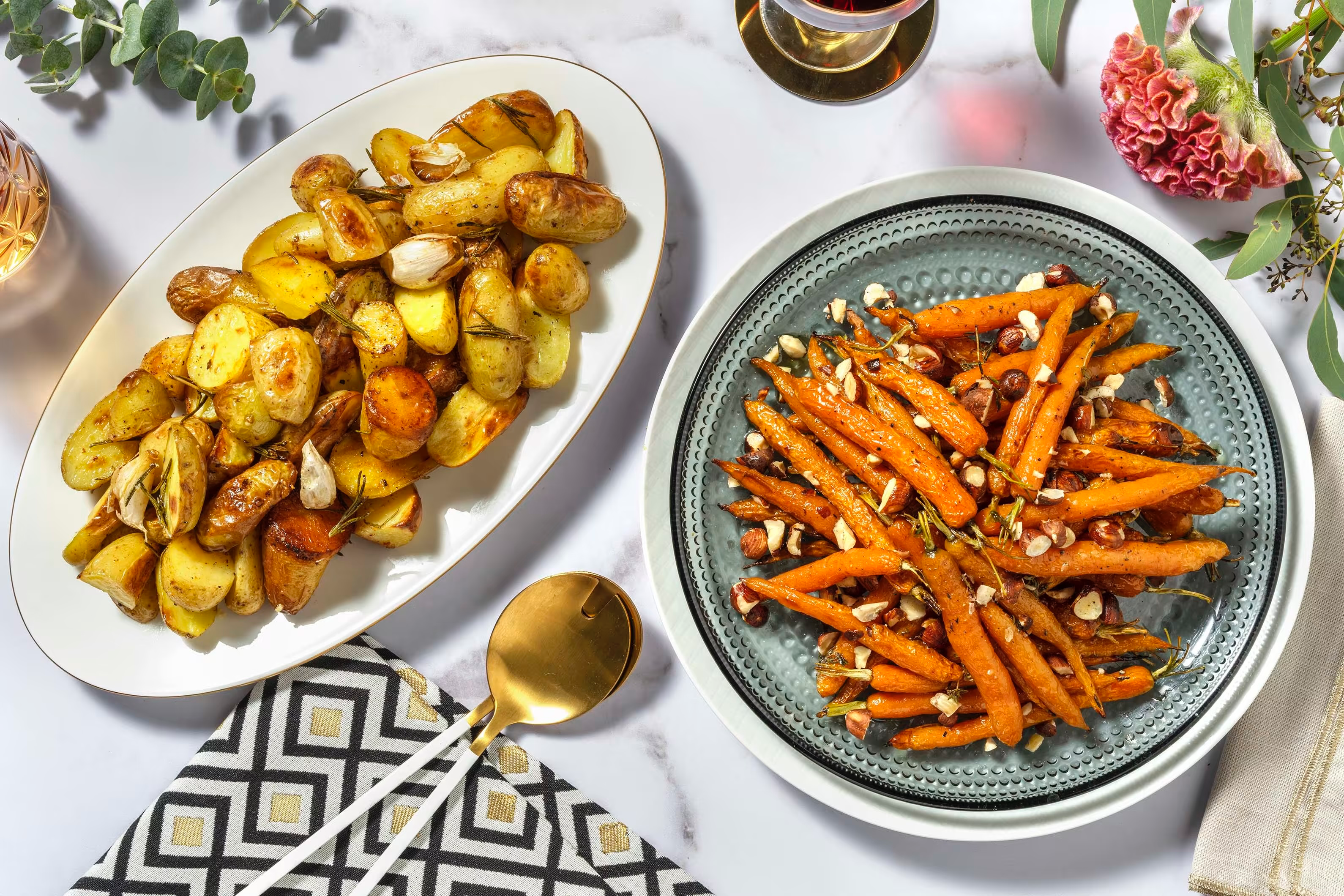
Technique
1: Truly Perfect Roast Potatoes
A great roast potato needs to check two boxes: a shatteringly crisp, golden-brown crust and a ridiculously fluffy, steaming inside. It sounds simple, but it takes a bit more than just tossing them in oil and hoping for the best. This is the method we used for every single holiday service, and it never fails.
Crispy Rosemary and Garlic Potatoes
Serves: 6-8 | Prep time: 20 mins | Cook time: about 1 hour
For this, you really want a starchy potato like a Russet. It’s non-negotiable for getting that essential fluffy texture.
Here’s what you’ll need:
- 3 pounds Russet potatoes
- 1/2 cup high-smoke-point fat (see notes below)
- Coarse sea salt
- 5-6 cloves garlic, left in their skins
- 3-4 sprigs fresh rosemary
A Quick Word on Fat: The gold standard here is goose or duck fat for its incredible flavor, but let’s be real, it can be pricey (around $15-20 a jar). For a fantastic and more budget-friendly option, use grapeseed oil, vegetable oil, or even melted beef tallow (beef dripping), which you can often get for a couple of bucks from the butcher.
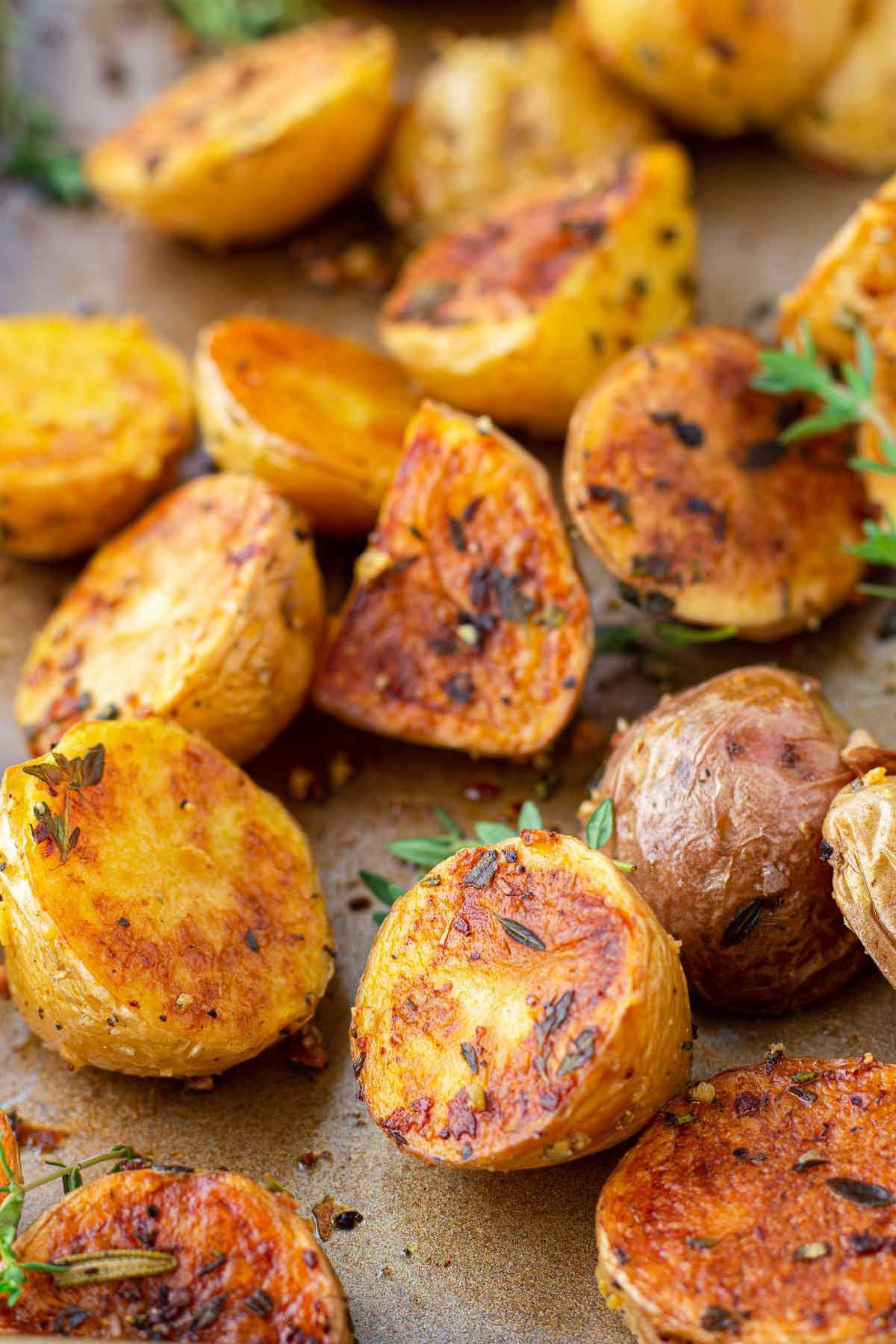
Step 1: The Parboil
Peel the potatoes and cut them into large, even chunks—about 2 inches is good. Getting the size consistent is key for even cooking. Put them in a big pot, cover with cold, salted water, and bring to a boil. Cook for about 8-10 minutes. You want the outside to be slightly soft, but the center should still be firm.
Step 2: The Shake (This is the magic part!)
Drain the potatoes really well in a colander and let them steam dry for a couple of minutes. Any leftover water is the enemy of crispiness! Now, for the most important step: give that colander a good, vigorous shake. You want to rough up the surfaces until they look fluffy and almost feathery. These scuffed-up edges are what will catch the fat and turn into that amazing crust.
Step 3: Get That Fat Screaming Hot
Pour your fat into a heavy-duty metal roasting pan. Heads up! Never, ever preheat an empty glass or ceramic dish in a hot oven, as it can shatter from the temperature shock. Always use a sturdy metal pan for this technique. Place the pan with the fat into the oven as it preheats to 425°F (220°C). The fat needs to be shimmering hot before the potatoes go in.
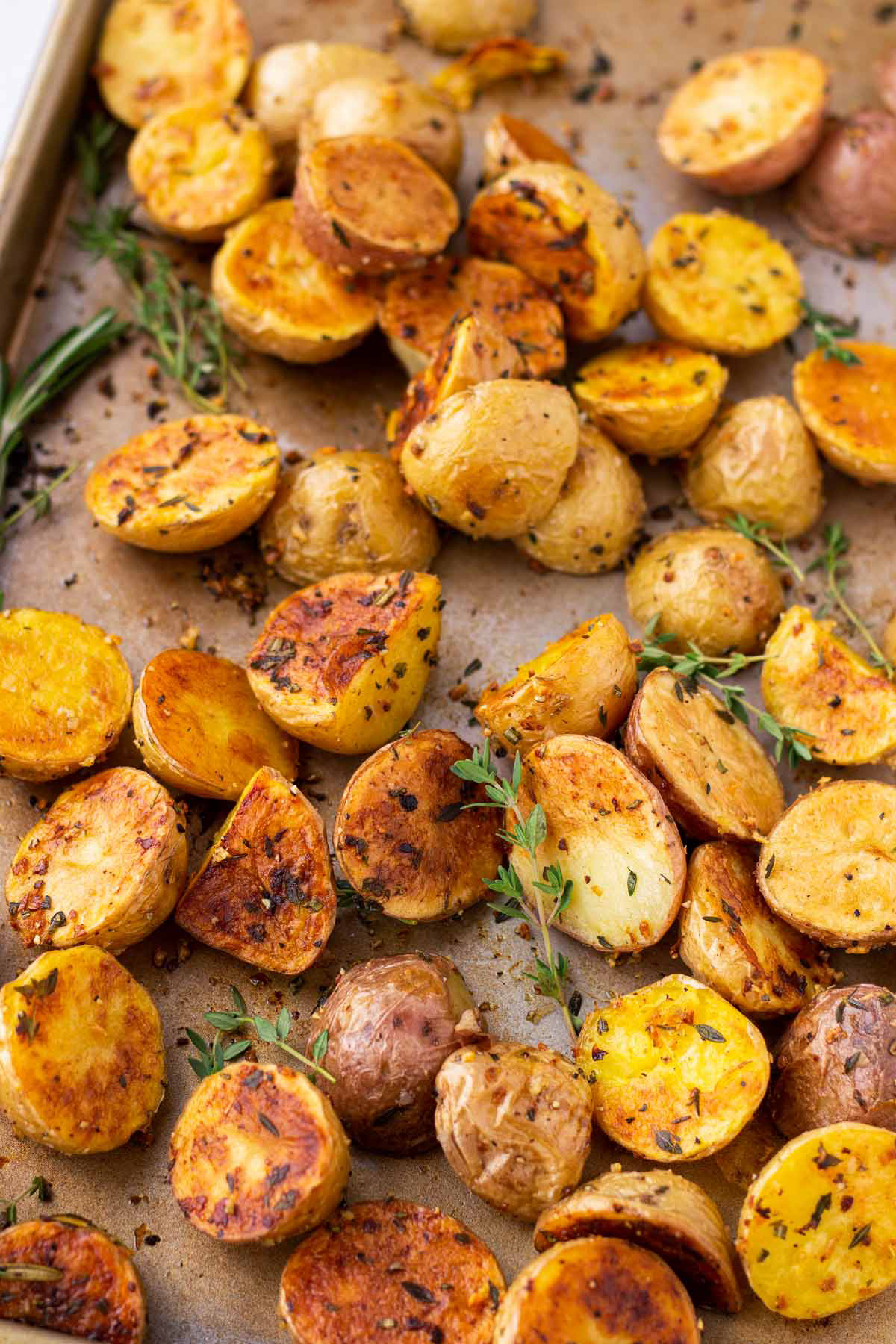
Step 4: The Roast
Carefully tip the shaken potatoes into the hot fat—they should sizzle immediately. Turn them over to coat completely, then spread them in a single layer with plenty of space. Roast for 30 minutes. Take them out, turn them over, and toss in the unpeeled garlic cloves and rosemary sprigs. Roast for another 25-35 minutes until they’re deep golden-brown and audibly crispy. Squeeze the sweet, roasted garlic out of its peel over the potatoes, toss gently, and serve right away.
Quick Tip for the Holidays: You can absolutely do the parboiling and shaking part in the morning! Just let the potatoes cool completely, cover them, and stick them in the fridge. They’ll be ready to roast right before dinner, which is a huge time-saver.
Troubleshooting Your Roasts
- Soggy Potatoes? Usually means there was too much moisture. Either the oven wasn’t hot enough, the pan was too crowded, or you didn’t let them steam dry enough.
- Stuck to the Pan? The fat probably wasn’t hot enough when you added the spuds. A heavy pan that holds heat well makes a big difference here.
- Not Browning Evenly? Most ovens have hot spots. A simple fix is to rotate your pan 180 degrees halfway through the roasting time.
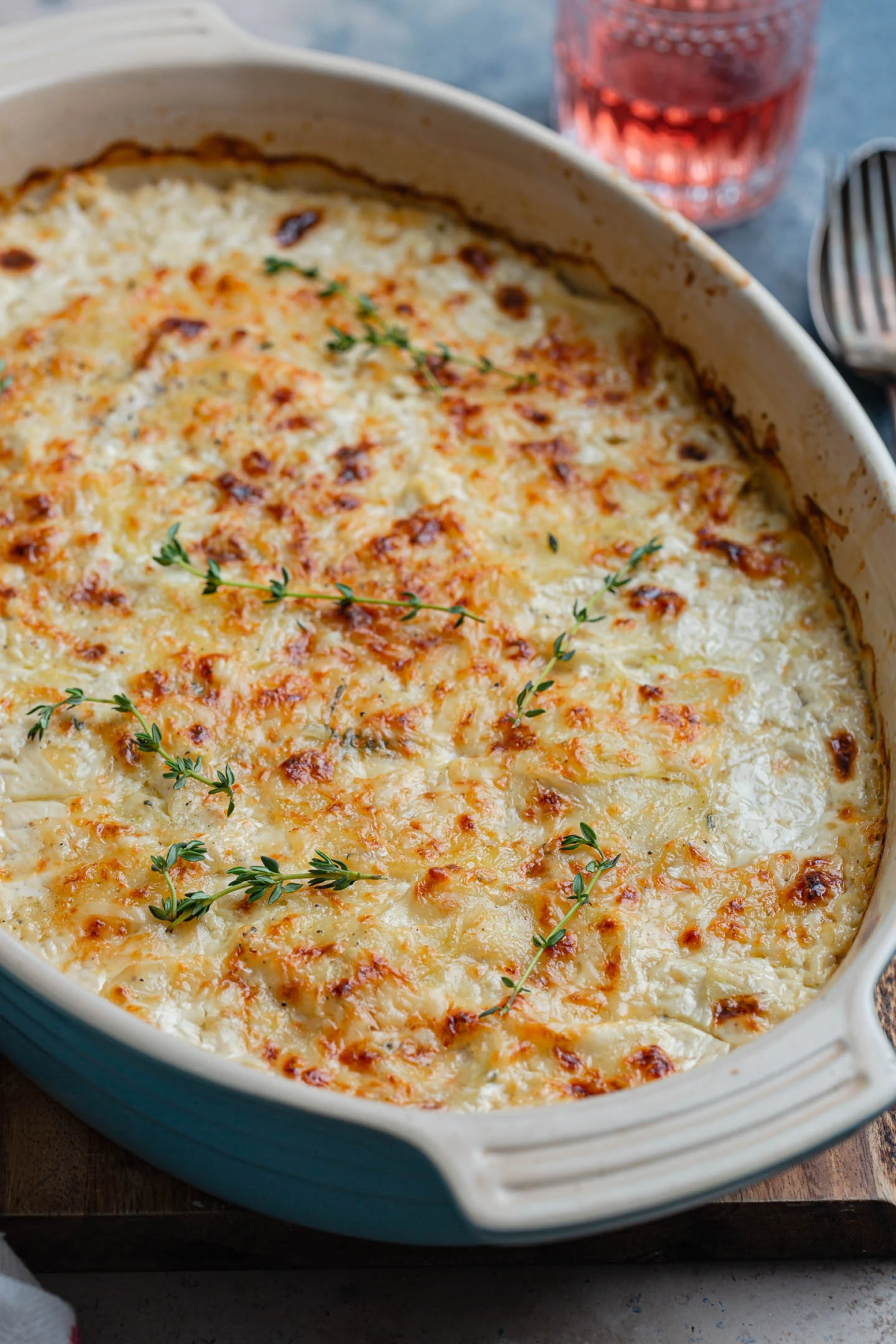
Technique
2: The Creamiest, Dreamiest Mashed Potatoes
Mashed potatoes seem so basic, but the gap between
Galerie d’inspiration
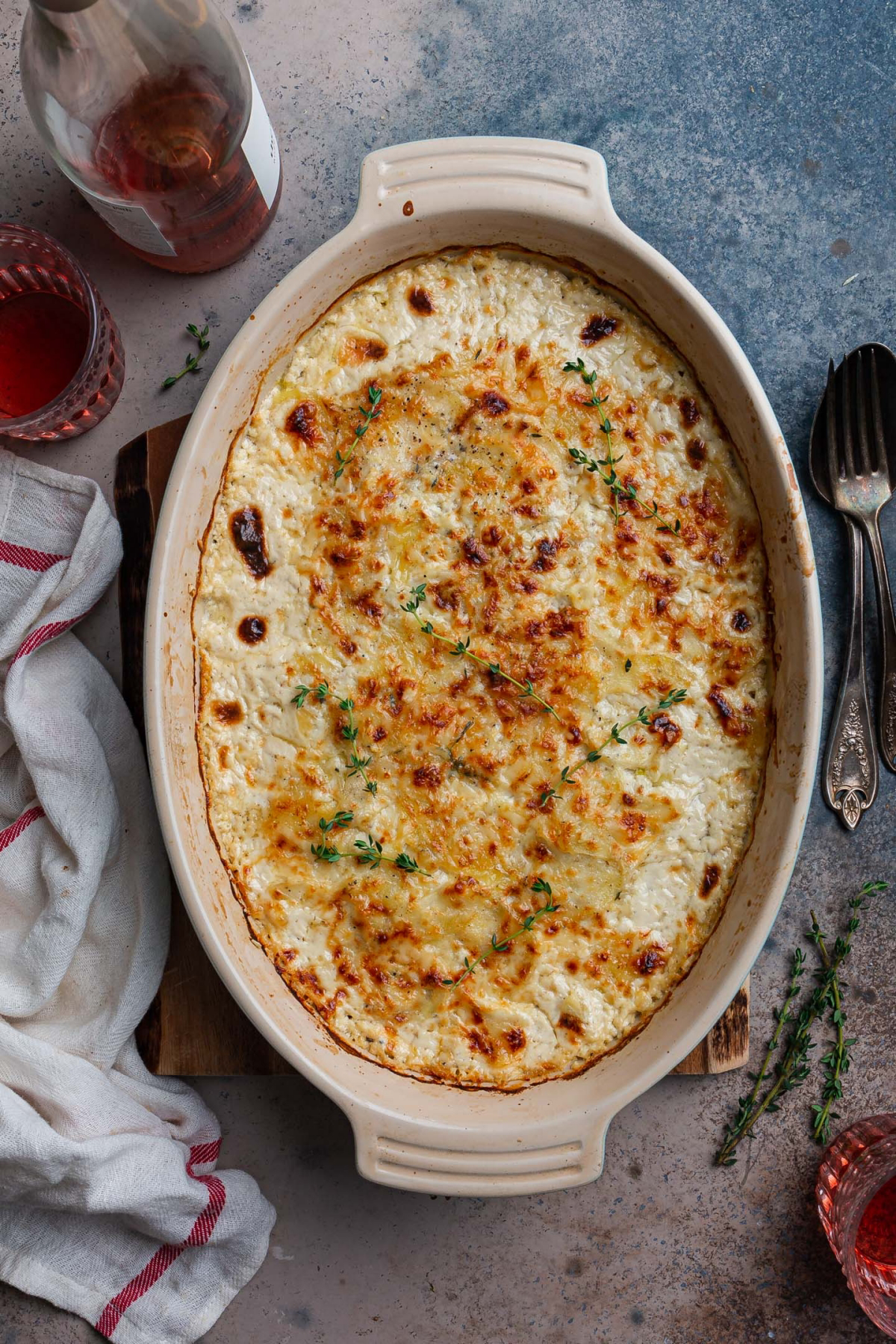
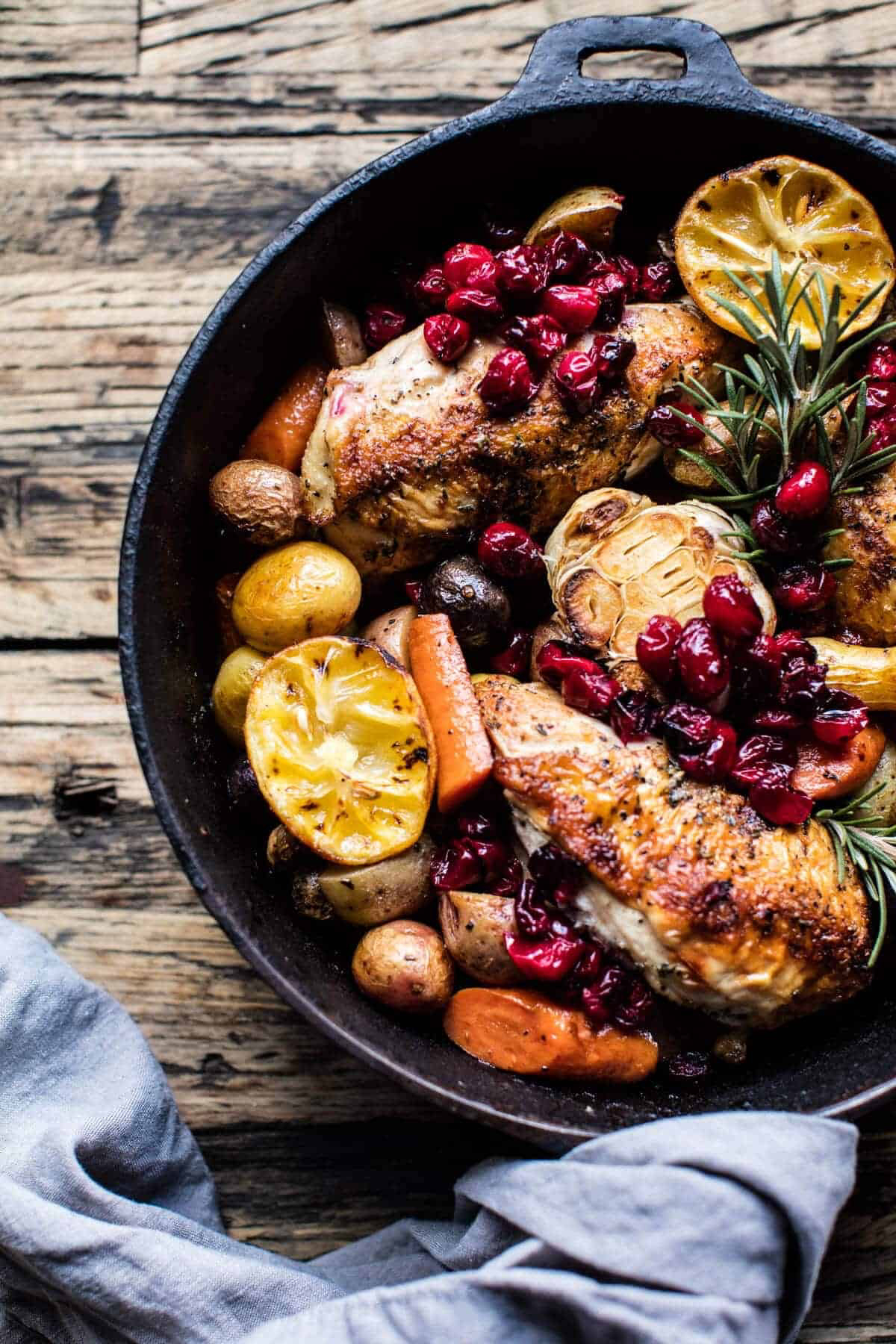
The secret to the fluffiest mashed potatoes isn’t just the potato type, but the tool. Over-mixing with a blender or food processor ruptures starch cells, resulting in a gummy, gluey texture.
For that coveted cloud-like consistency, a potato ricer is your best friend. Pushing the cooked potatoes through the small holes aerates them perfectly without overworking the starch. If you prefer a more rustic, slightly lumpy texture, a simple hand masher, like the classic model from OXO Good Grips, is the way to go. The choice defines the final character of your dish.
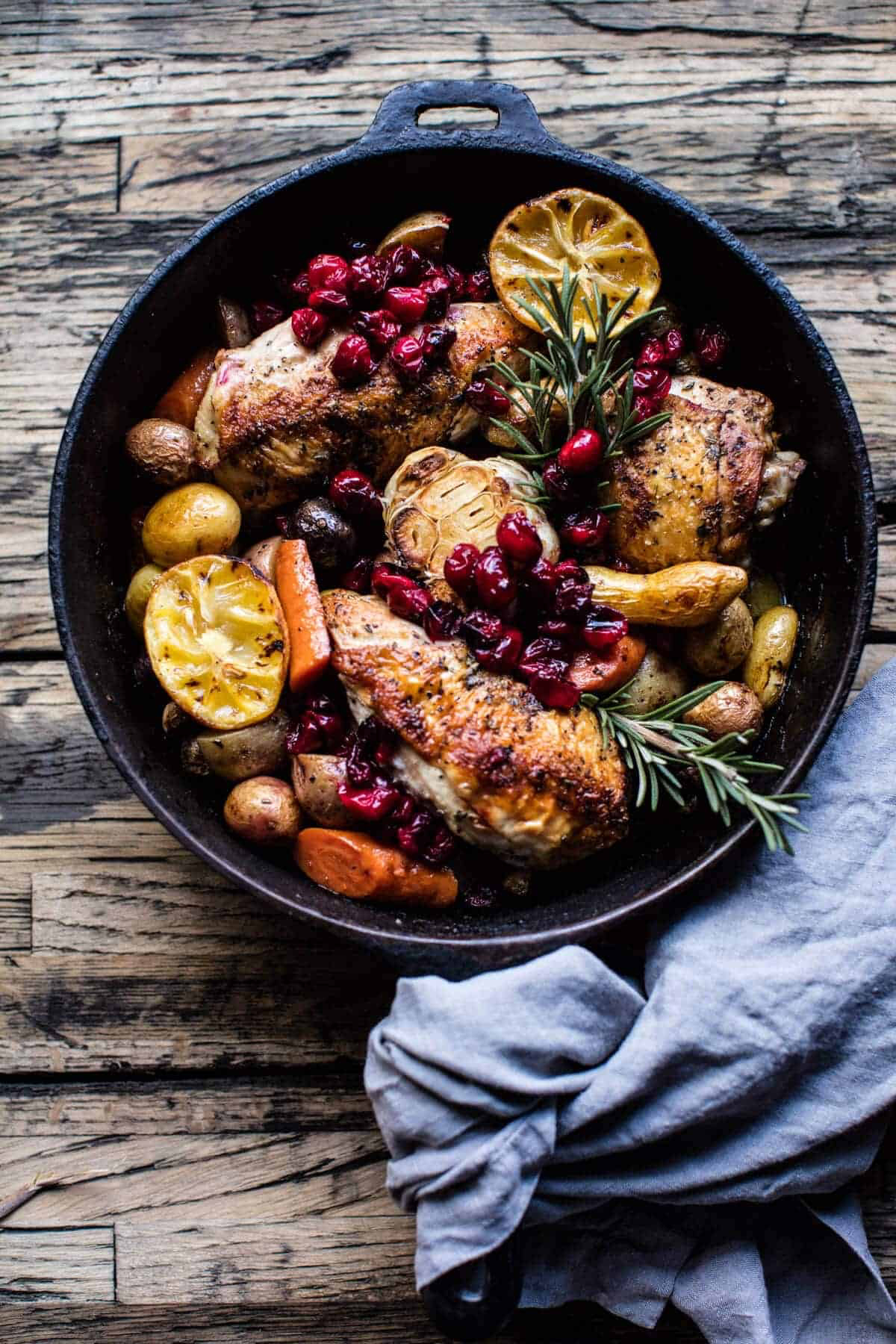
Want to get a head start on the holiday chaos?
You can absolutely prep your potatoes the day before. For roasting, peel and chop your potatoes (like Russets or King Edwards), parboil them for 7-10 minutes until the outside is just soft, then drain and rough them up in the colander to create a fluffy surface. Once cool, store them in an airtight container in the fridge, ready to be roasted to crispy perfection on the big day.
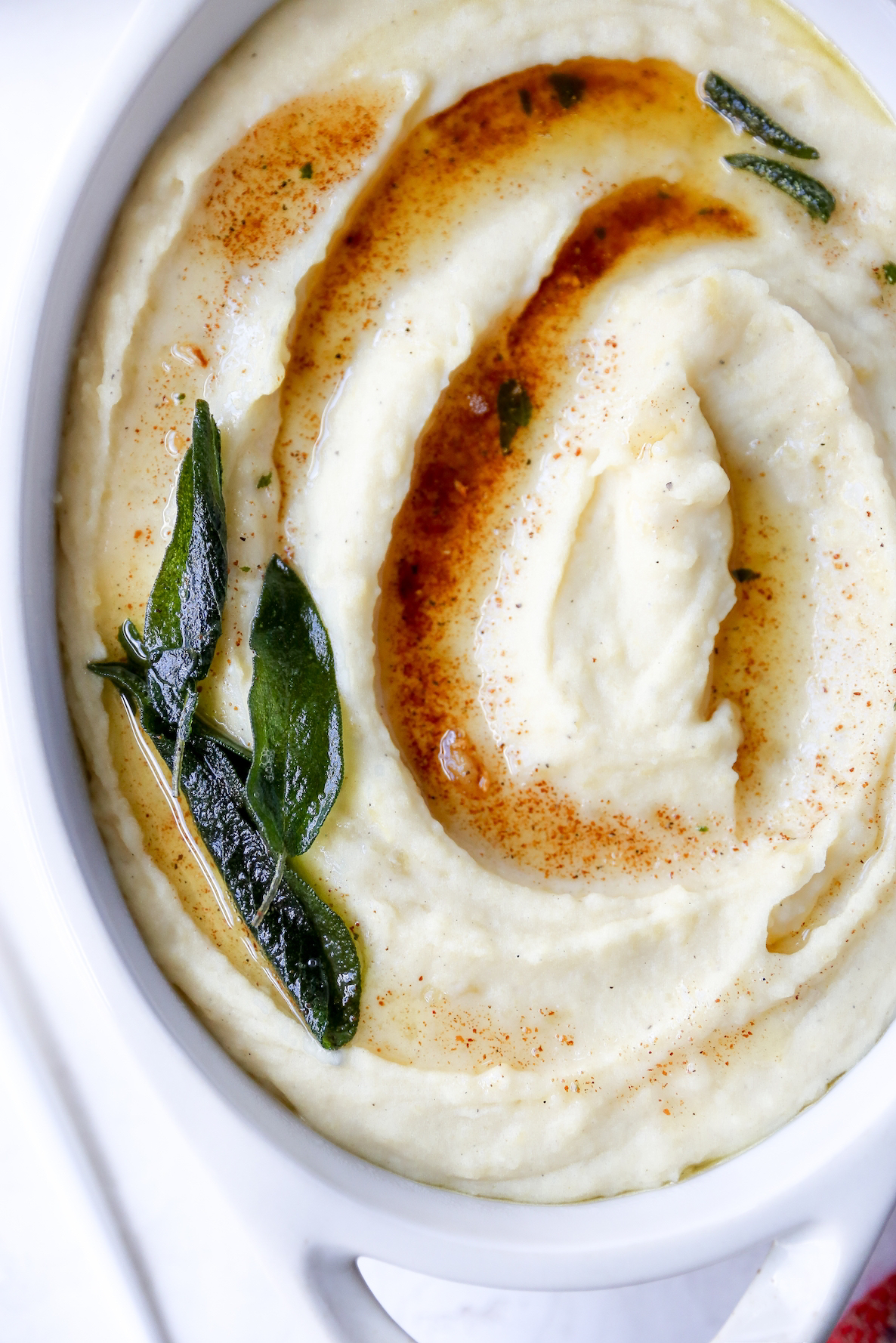
The Garnish Game: Elevate your potato dish from simple side to centerpiece with a thoughtful finishing touch. Forget a lone sprig of parsley. For a gratin, consider scattering toasted breadcrumbs mixed with Parmesan in the last 5 minutes of baking for a crunchy top. For mashed potatoes, a pool of melted butter topped with crispy fried sage leaves and freshly snipped chives adds aroma, texture, and a vibrant splash of color.
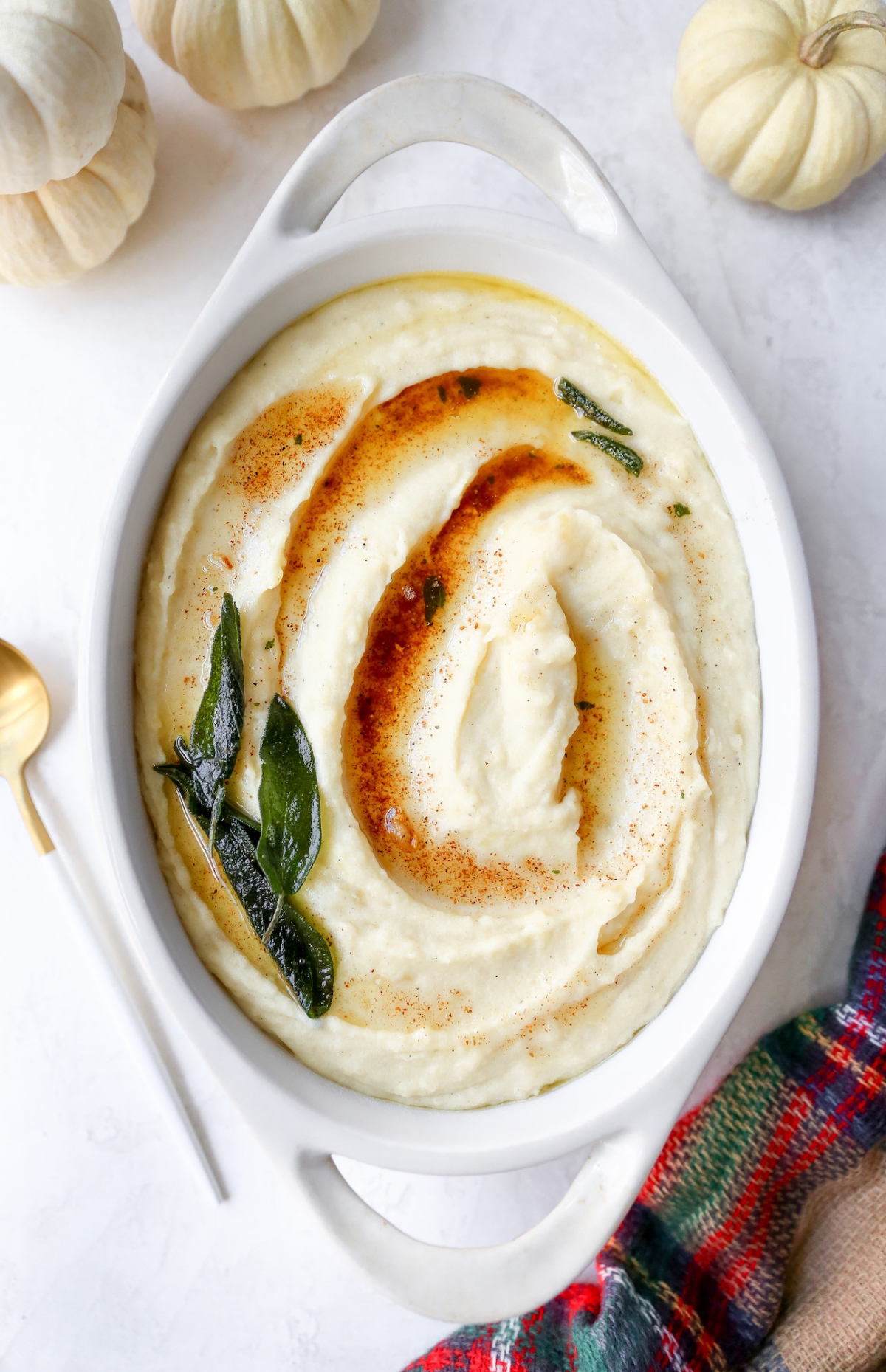
- A stunning, sculptural appearance.
- Edges that are incredibly crispy and golden.
- A soft, buttery interior that soaks up flavor.
The secret? It’s the Hasselback technique. By slicing a whole potato into thin, accordion-like cuts (without slicing all the way through), you create dozens of surfaces. As it bakes, butter, garlic, and herbs like thyme and rosemary seep into every crevice, creating a dish that’s as delicious as it is beautiful.
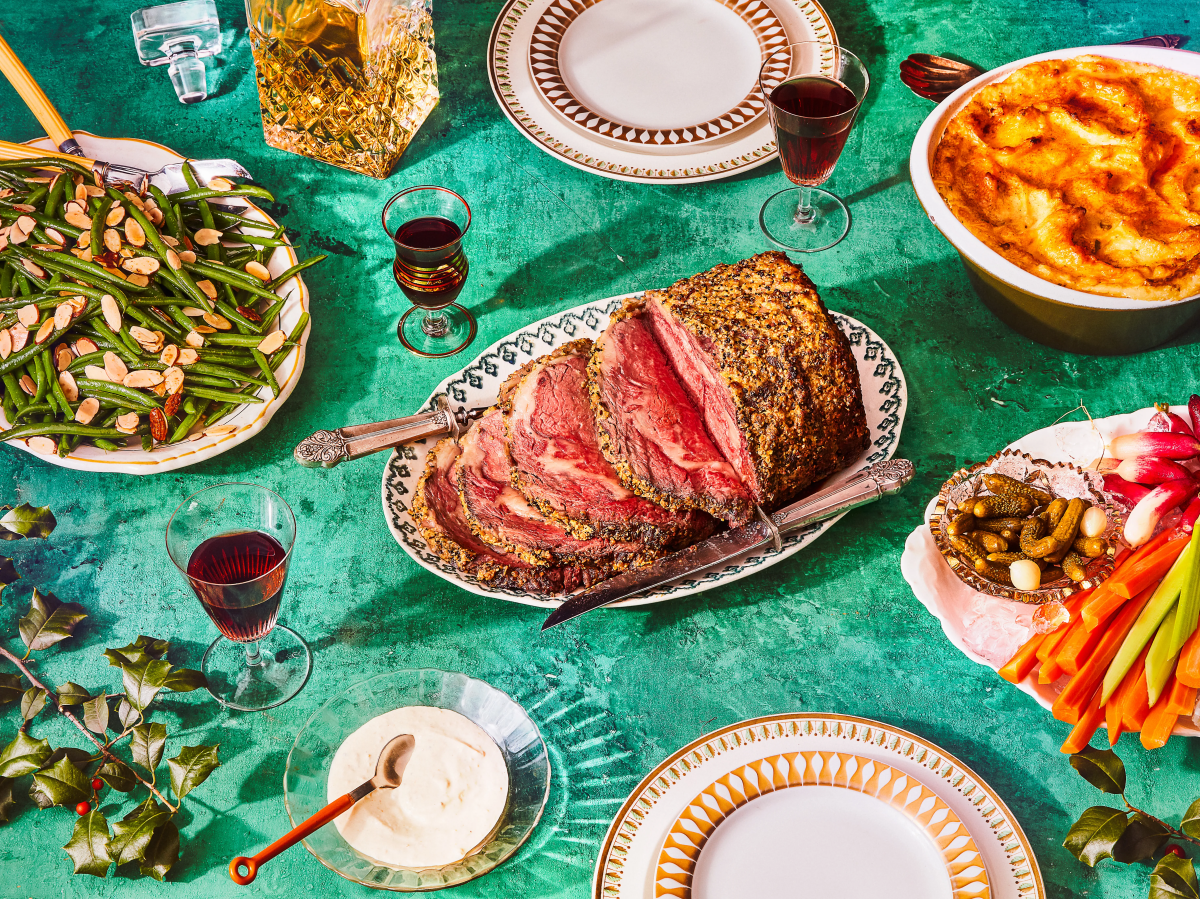
Don’t discard those potato peels! Especially from starchy potatoes like Russets, the skins can become a delicious, zero-waste snack. Simply toss the peels with a bit of olive oil, salt, and smoked paprika, then spread them on a baking sheet. Roast at 400°F (200°C) for 15-20 minutes, or until golden and wonderfully crisp. Serve them as a pre-dinner nibble or as a crunchy topping for a soup or salad.
Yukon Gold Potatoes: Creamy, dense, and naturally buttery. Their medium starch content makes for a rich, flavorful mash that holds its own without needing excessive amounts of cream or butter.
Sweet Potatoes: A vibrant alternative. For a truly festive look and a hint of sweetness, try mashing them with a touch of cinnamon, maple syrup, and a handful of toasted pecans for crunch.
The choice between classic and alternative often comes down to the flavor profile of your main course.










